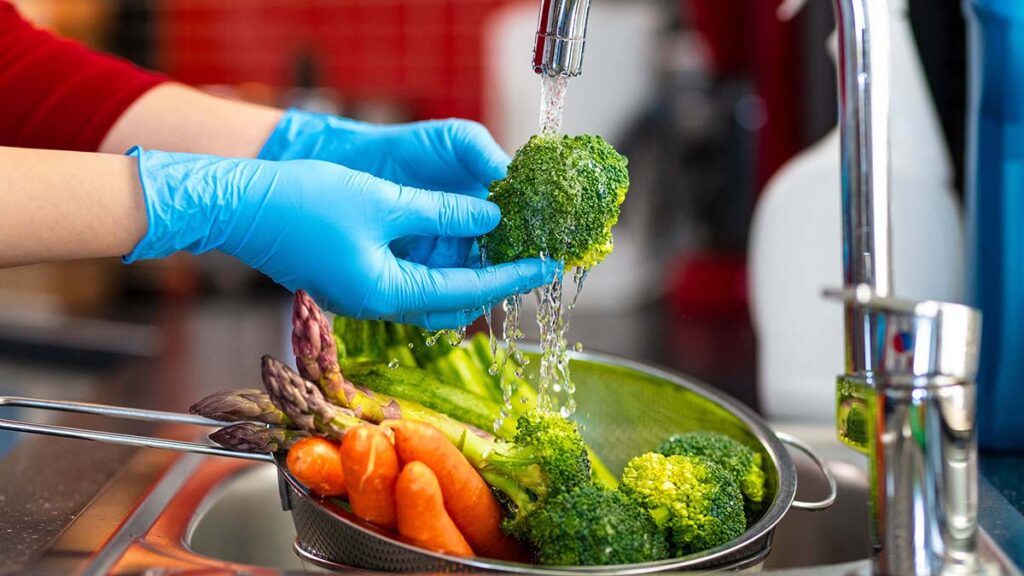By Desmond Nleya
Food is meant to nourish and sustain life. However, when contaminated, it can become a dangerous source of illness. Foodborne illnesses, often referred to as food poisoning, are a serious public health issue affecting millions of people worldwide each year. These diseases occur when people consume food or drinks contaminated with harmful bacteria, viruses, parasites, or chemical substances.
What Are Foodborne Illnesses?
Foodborne illnesses are infections or irritations of the gastrointestinal (GI) tract caused by consuming unsafe or contaminated food or beverages. They are commonly caused by:
Bacteria such as Salmonella, E. coli, and Listeria
Viruses like Norovirus and Hepatitis A
Parasites such as Giardia and Toxoplasma
Toxins or chemicals, including those from improperly stored or handled food
Common Symptoms of Foodborne Illnesses
Symptoms of foodborne illnesses may vary depending on the cause, but the most frequent signs include:
Nausea
Vomiting
Diarrhea (sometimes bloody)
Abdominal cramps and pain
Fever
Fatigue
Loss of appetite
Symptoms can begin within hours of eating contaminated food or may appear days later. Most cases are mild and resolve without treatment, but some can be severe or even fatal, especially in young children, the elderly, pregnant women, and those with weakened immune systems.
How to Prevent Foodborne Illnesses
Prevention is key in avoiding foodborne diseases. Good hygiene, proper food handling, and cooking practices can significantly reduce the risk. Here are essential preventive steps:
1. Clean
Wash hands thoroughly with soap and water before handling food.
Clean all kitchen surfaces and utensils regularly.
Rinse fruits and vegetables under running water before eating or cooking.
2. Separate
Keep raw meat, poultry, seafood, and eggs separate from other foods to prevent cross-contamination.
Use separate cutting boards and knives for raw and cooked food.
3. Cook
Cook food to the appropriate internal temperature to kill harmful organisms (e.g., 75°C/165°F for poultry).
Use a food thermometer when necessary.
4. Chill
Refrigerate perishable foods within two hours.
Keep your refrigerator at or below 4°C (40°F) and freezer at -18°C (0°F).
Thaw frozen food safely in the fridge or microwave, not on the counter.
Treatment and Cure
For most people, foodborne illnesses resolve on their own within a few days. Treatment generally focuses on relieving symptoms and staying hydrated:
1. Home Remedies and Supportive Care
Drink plenty of fluids (water, oral rehydration solutions, broth) to prevent dehydration.
Rest to help the body recover.
Avoid solid food until vomiting and diarrhea subside.
2. Medical Treatment
Antibiotics may be prescribed for certain bacterial infections but are ineffective against viruses.
Hospitalization may be required for severe dehydration, high-risk individuals, or prolonged illness.
Seek immediate medical attention if you experience:
Bloody stools
High fever (above 38.5°C/101.3°F)
Prolonged vomiting or diarrhea
Signs of dehydration (dry mouth, low urine output, dizziness)
Conclusion
Foodborne illnesses are preventable, yet they remain a global health concern due to poor food safety practices and lack of awareness. By following simple hygiene guidelines and being cautious with food handling, storage, and preparation, individuals and communities can protect themselves and others. Public education, stronger food safety regulations, and responsible consumer behavior are crucial steps in fighting the burden of foodborne diseases.
Remember, safe food is everyone’s responsibility — from farm to table.


